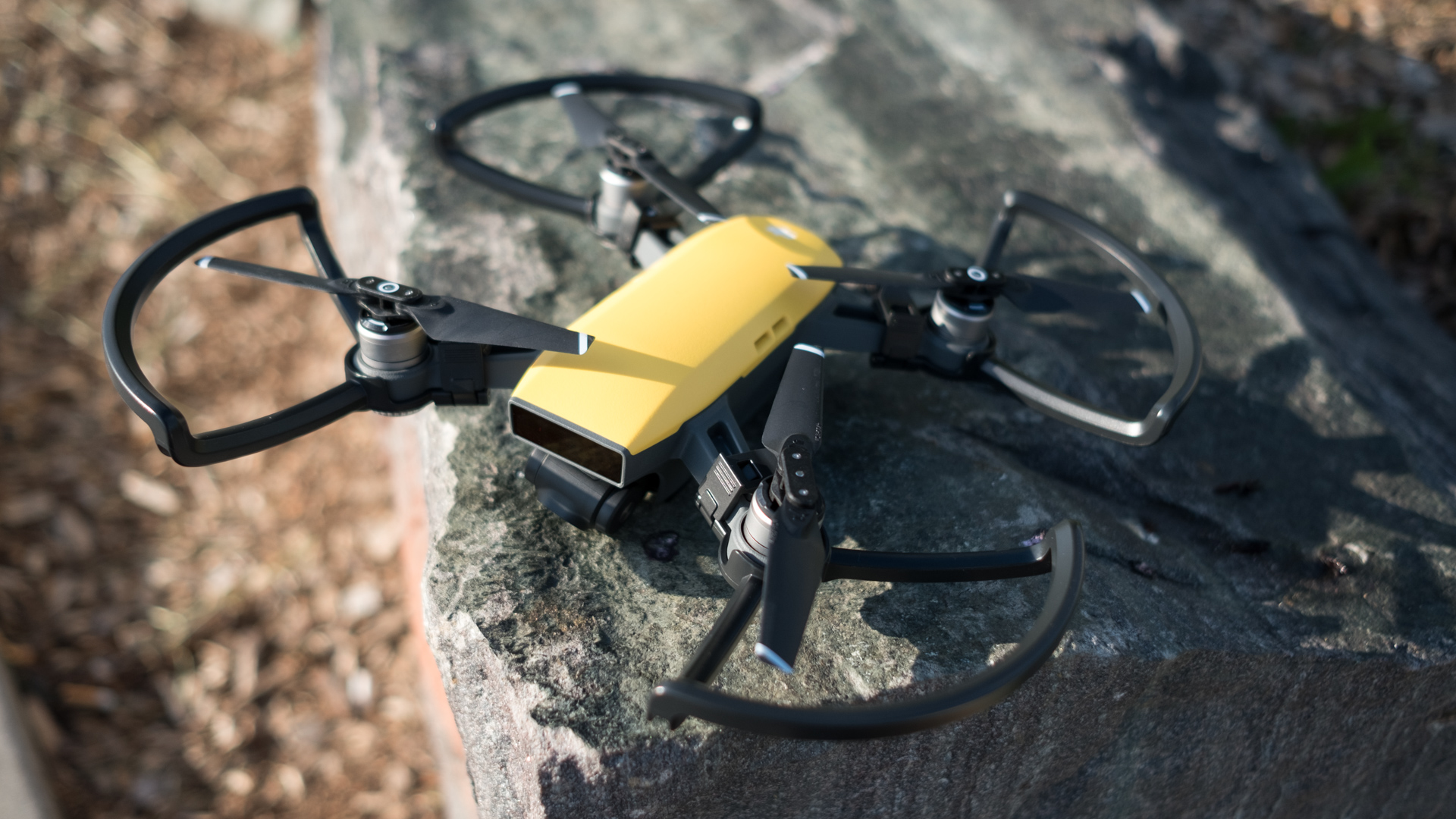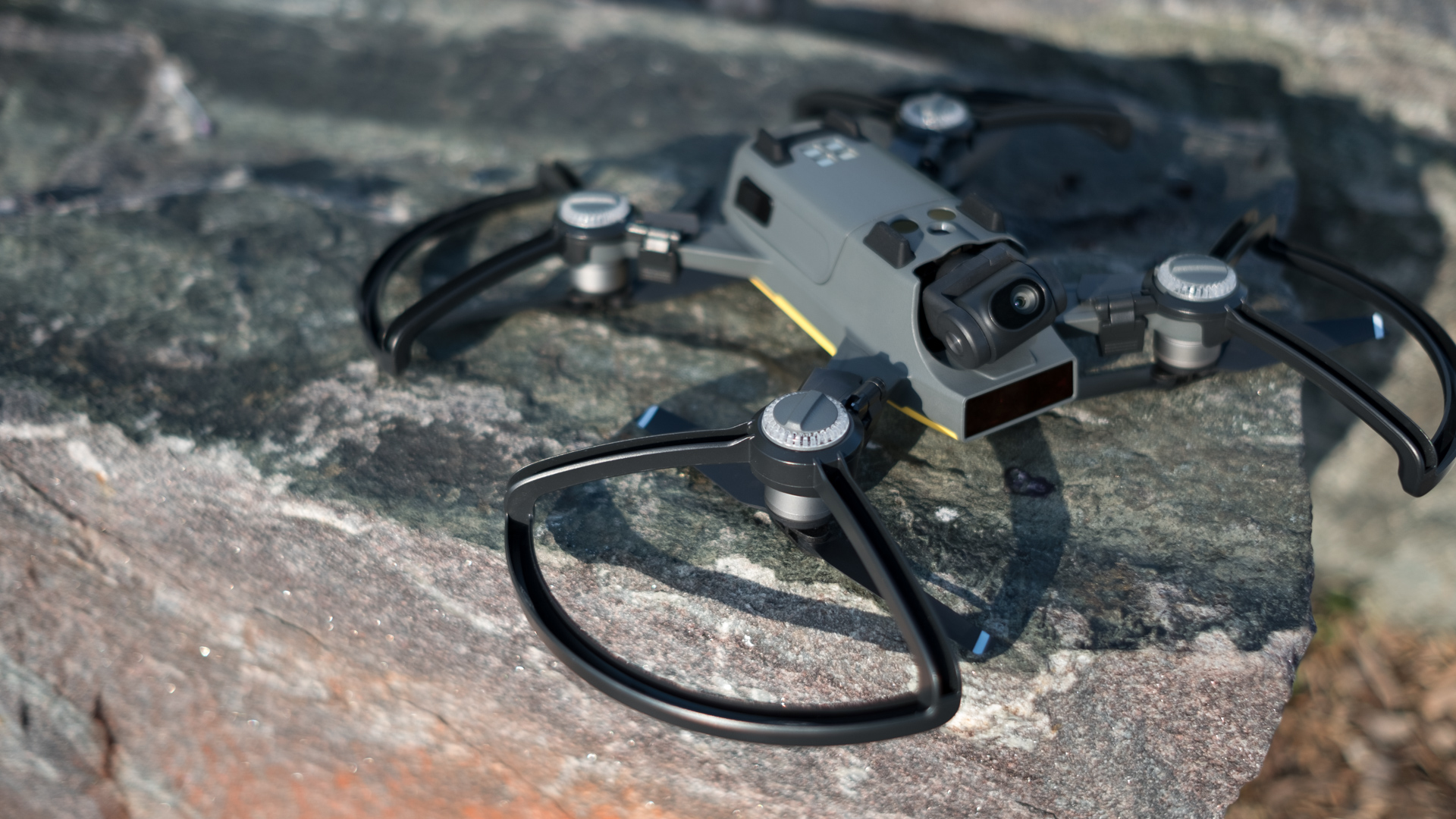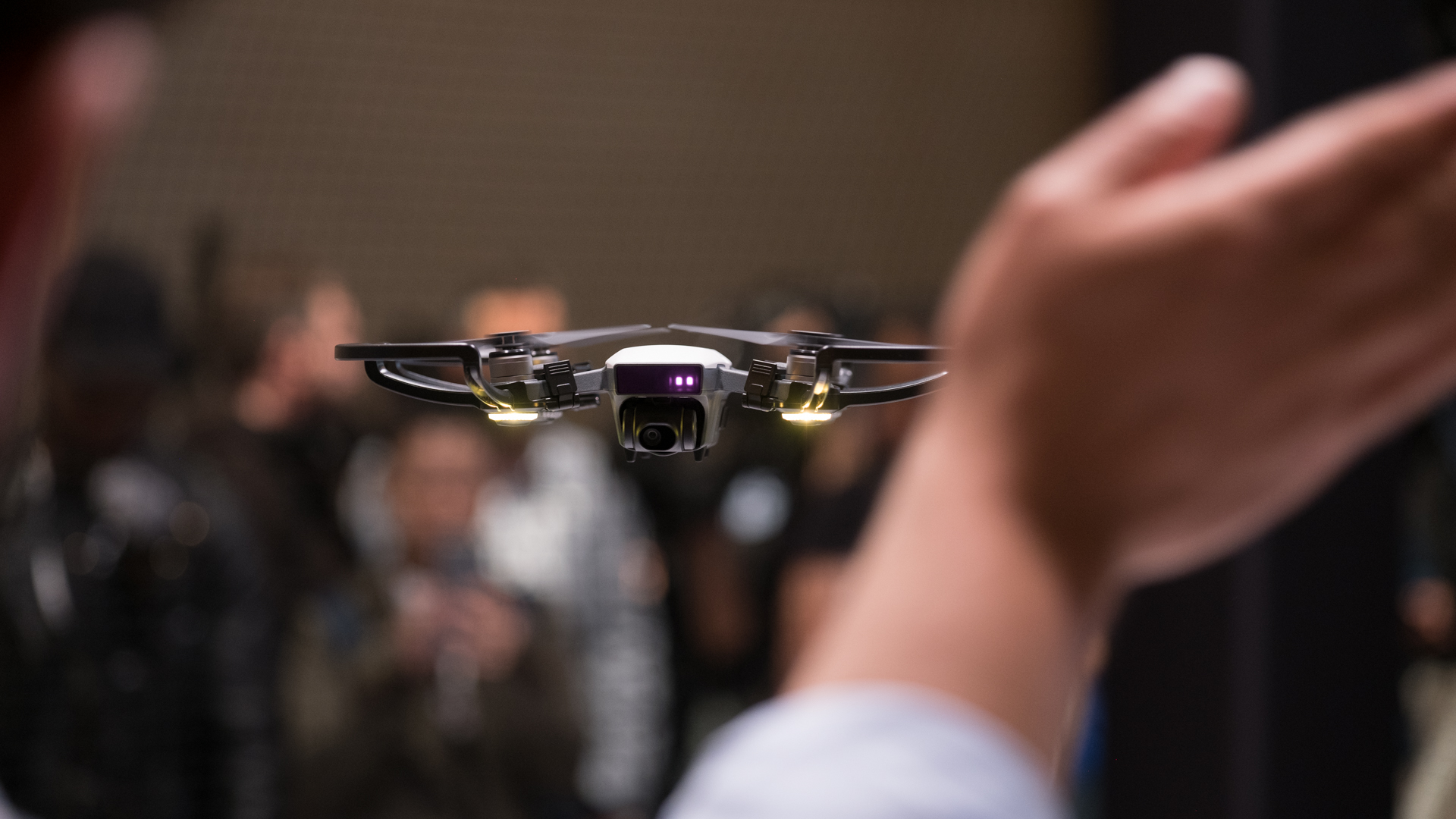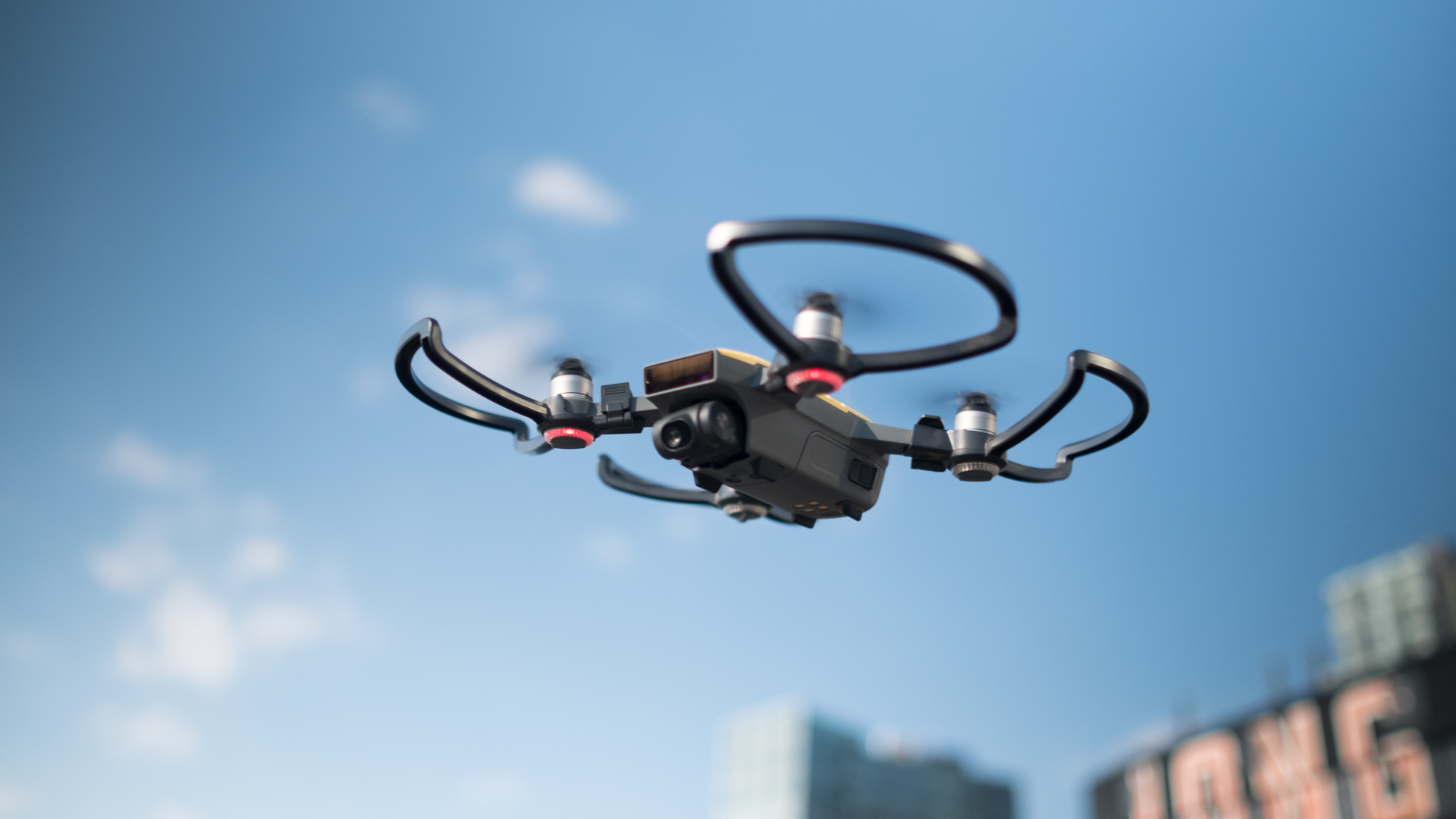TechRadar Verdict
No larger or heavier than a can of soda, the DJI Spark is the portable drone you’ve been waiting for. Its automatic flight capabilities and ability to recognize hand gestures outshine its few problems.
Pros
- +
Controller-free gesture controls
- +
Absolutely tiny
- +
Automatic Quickshot modes
Cons
- -
Spotty Wi-Fi connection with smartphones
- -
Short flight time
- -
Easily swayed by the wind
Why you can trust TechRadar
Update: We're still waiting for news on a sequel to the DJI Spark, but a recent leaked image and catalog ad have given us a sneak preview of the upcoming DJI Mavic 2. The new drone was originally due to launch on July 18, but DJI has now pushed that date back. We'll keep you updated as soon as we know more about the new Mavic, and when we hear the first news about the DJI Spark 2. Original review continues below.
Drones may be getting smaller and more affordable than ever, but few have yet to be a hit with the honest-to-goodness mainstream audience. The DJI Spark hopes to be the first to make its mark with a blend of compactness, automated features and an affordable price point.
No larger than can of soda and likely smaller than that super-sized smartphone you have in your pocket, the DJI Spark is an amazing example of how small drones can get. While it might be tiny, this drone comes fully packed with technology, including obstacle detection, GPS, stabilization and the ability to recognize hand gestures as flying commands.
Controlling a drone with just a wave of our hand is easily the coolest thing we’ve ever done and the closest we’ve ever come to being a Jedi. However, if you look past the headlining features, the DJI Spark runs into a few unavoidable issues that come with the limitations of being so small.
Pricing and availability
With a starting price of $499 (£519, AU$859) the DJI Spark is the company’s most affordable drone. At this price point it competes with other affordable drones like the $549 (£439, AU$649) Parrot Bebop 2 and $399 (£439, AU$629) Yuneec 4K Breeze.
That said, for 500 bucks you’re only getting the drone by itself without a remote controller. If you want the physical controller and the extended range that comes with it, that’ll be an additional $149 (£159, AU$259). Alternatively, the $699 (£699, AU$1,199) Fly More combo comes with the remote controller, a set of replacement propellers, an additional battery, battery charging hub and shoulder bag.

Design
It’s no joke that the DJI Spark is as small as a can of soda. Measuring in at a scant 143 x 143 x 55mm and 300 grams (10.6 ounces), the mini drone is something you can easily stuff into any bag or even hang off the back of your belt.
Sign up for breaking news, reviews, opinion, top tech deals, and more.
The DJI Spark also comes in a small foam box that’s really no bigger than a headphone case we would normally put into our bag. The included storage box also has compartments for four replacement propellers and two extra batteries.
Aside from its small size, the Spark is DJI’s first drone to be offered in a variety of colors: Alpine White, Sky Blue, Meadow Green, Lava Red and Sunrise Yellow. The splash of color is welcome piece of personalization in a world of drones that have thus far been a mix of gray, white and black.

In terms of looks, the Spark is a lot like a shrunken DJI Mavic Pro, and that shouldn’t really come as a surprise. It has a very similar angular body with a camera hanging right underneath the front sensor array.
One key difference of the Spark is its limbs don’t fold into the drone like the Mavic Pro and GoPro Karma Drone. The good news is you can fold the propellers to make it a smaller package and these rotor blades will also lock into flight position once they start spinning.
Unlike most other drones, the DJI Spark also has stubbly feet rather than extended landing gear. This is in part to keep the drone as small as possible while also making it comfortable enough to hold when landing the drone onto your palm. That said, the Spark’s tiny feet make it harder to land on uneven and rocky surfaces.

Build and handling
The DJI Spark might be small, but its main body feels dense and solid as a brick. The drone’s limbs feel just a sturdy thanks to some heavy ribbing. With nearly zero visible seams along the drone’s body, it’s clear that most of the Spark’s fuselage is molded from one solid piece of plastic.
Taking off with the DJI Spark takes mere seconds of setup with attaching the propeller guards, turning it on and linking it to your smartphone through the DJI Go 4 app.
Alternatively, you can skip the controller and command the DJI Spark with just hand gestures through the new feature called PalmControl.
Spoilers, this is easily the DJI Spark’s coolest hat trick.
You can have the drone take off from the palm of your after it scans your face. From there you can wave your hands at it to take control of flying it like a Jedi moving objects with the force. Waving your hand commands the drone to fly up and away from you, after which you can form a picture frame with your fingers to have it take a selfie.
Although PalmControl feels intuitive enough, it is also very finicky if you want to do anything beyond the basic navigation commands. You have to wave at the drone in just the right way, and selfies only trigger a third of the time when we make the picture frame gesture.

Another catch of PalmControl is that you need to be within 10-feet of the drone for it to recognize your gestures.
When everything lines up and PalmControl does work perfectly, it feels like magic. Flying a drone becomes spontaneous without a controller. It’s also much more inviting to less-seasoned aviators and tech-savvy people who want try their hand at flying drones.
In fact, we started the drone in PalmControl several times and after just a few moments of instruction we passed control to our friends and family members with ease.
Current page: Introduction, design, build and handling
Next Page Performance, features and video quality
Kevin Lee was a former computing reporter at TechRadar. Kevin is now the SEO Updates Editor at IGN based in New York. He handles all of the best of tech buying guides while also dipping his hand in the entertainment and games evergreen content. Kevin has over eight years of experience in the tech and games publications with previous bylines at Polygon, PC World, and more. Outside of work, Kevin is major movie buff of cult and bad films. He also regularly plays flight & space sim and racing games. IRL he's a fan of archery, axe throwing, and board games.
